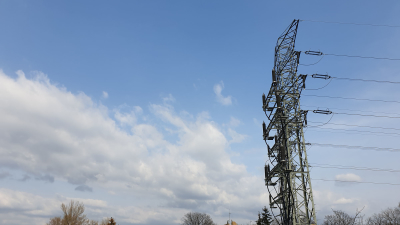
Everything you need to know about 5G
5G, eventually slated to replace the present-day 3G and LTE/4G cellular telephone networks, promises to speed up the rate of data transfer by 100 times or more. How fantastic is that!
However, it has become intensely controversial not only among scientists but also the general public. There are many concerns regarding the possible health effects of electromagnetic field (EMF) radiation emitted by base stations in 5G technology.
Mobile Frequencies Illustration and Dates
What do we know about 5G in 2020?
Wireless technology has been the subject of endless speculation over the past few years. The FDA’s (U.S. Food and Drug Administration) and WHO (World Health Organization) doctors, scientists and engineers continually monitor the scientific studies and public health data for evidence that radio frequency energy from cell phones could cause adverse health effects.
A new cellular standard is announced every decade. Looking back through history, the first mobile infrastructure was announced back in 1991.
At this moment in time, 6G is already generating headlines in the world of technology. It will eventually replace 5G, but currently 6G is not a functioning technology, and is instead in the early research and concept phase. Mobile telecoms companies are much too focused on 5G to deal with 6G in any significant way at the moment, and for the foreseeable future, too.
Mobile Technology Frequency Table
Read also: Something in the Air: 5G myths debunked
What is 5G?
As with previous cellular technologies, 5G networks rely on signals carried by radio waves - part of the electromagnetic spectrum - transmitted between an antenna or mast and your phone.
The electromagnetic spectrum is natural. Electromagnetic radiation is measured in frequency and wavelength. Radiation at lower frequencies than visible light is known as microwave and radiowave part of the spectrum. Mobile phones communicate with base stations in the radio waves spectra.
5G mobile technology promises a ten-fold increase in data transmission rates compared to current 4G networks, which will be achieved by using a higher transmission frequency. The physiological effects of electromagnetic radiation change with frequency, so the advent of 5G triggered a major international review of relevant radiation safety guidelines, for which it’s agreed that there is insufficient data for a meaningful health risk assessment.
At CES 2020, the carriers were insisting 2020 will be a turning point for 5G (following the statement of AT&T and Verizon - as they expect their 5G networks will be available this year nationwide).
We're surrounded by electromagnetic radiation all the time - from television and radio signals, as well as from a whole range of technologies, including mobile phones, laptops, tablets etc. and from natural sources such as sunlight.
How does 5g work?
5G uses higher frequency waves than earlier mobile networks, allowing more devices to have access to the internet at the same time and at faster speeds.
These waves travel shorter distances through urban spaces, so 5G networks require more transmitter masts than previous technologies, positioned closer to ground level.
5G is the fastest, with actual speeds often being 1–2 Gb/s down. Frequencies are above 24 GHz reaching up to 72 GHz which is above the extremely high frequency band's lower boundary. The reach is short, so more cells are required. Millimeter waves have difficulty traversing many walls and windows, so indoor coverage is limited.Because of this, 5G is the fifth generation of mobile phone technology, using, poorly researched 30GHz band frequencies and higher, we simply fear them.
5G uses millimetre-long, high frequency waves transmitted between transmitting towers and receiving equipment such as smartphones etc. This means that millions of new transmitters will have to be built for this purpose by placing them in an urban area no more than 10-12 houses from one another.
The ‘5G Deployment State of Play in Europe, USA and Asia’ study, commissioned by the European Parliament, said that masts will be deployed every 20-150 meters. Location every 20m means as many as 800 antennas per one square kilometer (around 0.4 squared mile)! Also, within the framework of the Internet of Things (IoT), the target is about one million devices per one square kilometer! Each of them will emit microwaves continuously, 24 hours a day.
5G radiation - fraza: 5g radiation
We don't know if EMFs are harmful but we are worried that more than 240 scientists and physicians from 42 countries have expressed serious concerns about the ever-increasing exposure to electromagnetic fields produced by existing electrical and wireless communication devices - even before the implementation of the additional 5G. They stress that "many current scientific publications have shown that electromagnetic fields (EMFs) affect living organisms at levels well below in most national and international guidelines" (EMFscientist.org).
These symptoms include cancer risk, cellular stress, increased levels of harmful free radicals, genetic damage, structural and functional changes to the human reproductive system, learning and memory defects, neurological disorders and negative effects on human well-being. The damage goes far beyond the issue of human health as the number of proven harmful effects of this technology on plants and animals is increasing.
The world's largest study under the National Toxicology Program (NTP) has revealed a statistically significant increase in the incidence of heart disease and brain cancer in animals exposed to electromagnetic fields (EMF) with lower values than the International Commission on Non Ionising Radiation Protection (ICNIRP) guidelines, which are followed by most countries (ICNIRP GUIDELINES, ICNIRP SCI REVIEW).
New research and several epidemiological studies - including the latest on the use of mobile phones and the risk of brain cancer - confirm that radio frequency electromagnetic field radiation (RF-EMF) is clearly harmful to humans.
Unfortunately, the existing standards are being raised by 100 times in different countries so that operators have the unlimited possibility to increase radiation in the environment and do not have to worry about regulations. Broadband Internet can be provided without the need to raise the standard by optimising the network of base stations and developing fibre-optic networks.
Raising standards also causes an electromagnetic compatibility problem.
The general requirements derive from the Electromagnetic Compatibility Directive 2014/30/EU on the harmonisation of Member States relating to electromagnetic compatibility (Source, Language: Polish). The Directive sets out the so-called essential requirements, set out in Annex I. According to Annex I of EMC Directive 2014/30/EU, equipment must be so constructed that:
it does not generate electromagnetic disturbance exceeding an acceptable level in a given environment,
It was resistant to disturbances generated by devices operating in a specific environment.
Conclusion
In one of our previous blog posts ‘Which Frequencies Does Your Smartphone Use?’ we went into more detail in response to the question ‘Is 5G dangerous?’
Our conclusion remains the same, ‘we cannot say for certain how it will affect us as human beings but taking precautions when it comes to the use of emerging technology is always a good idea’.
If you’d like to join in the conversation on our forum, we have a topic where you can express your thoughts about 5G. Feel free to add any additional (scientific) sources you may have.
For those wishing to deepen their knowledge:
5G leads to massive increase of mandatory exposure to wireless radiationNobody can avoid being exposed to RF-EMF. Today over 1 billion people use networked smartphones. Each smartphone has thousands times more compute power than a room sized IBM machine from the 70’s. “There are clearly billions more people yet to connect to ‘mobile’ and while that’s important it’s not the next quantum leap. It will require a phenomenological change in underlying technologies to enable another epoch-setting order-of-magnitude increase in a number of connections.”* . The IoT (Internet of Things) will expand to 10 to 20 billion more connections with unique identifiers (UIDs).
Electromagnetic hypersensitivity--an increasing challenge to the medical profession.
*“The Internet Of Things Won't Be Big It'll Be Huge” , Mark P. Mills, Forbes https://www.forbes.com/sites/markpmills/2016/09/28/the-internet-of-things-wont-be-big-itll-be-huge/
“Electromagnetic field induced biological effects in humans.”, Kaszuba-Zwoińska J, Gremba J, Gałdzińska-Calik B, Wójcik-Piotrowicz K, Thor PJ., Przegl Lek. 2015;72(11):636-41.[https://www.ncbi.nlm.nih.gov/pubmed/27012122]
“Risks to Health and Well-Being From Radio-Frequency Radiation Emitted by Cell Phones and Other Wireless Devices.”, Miller AB1, Sears ME2, Morgan LL3, Davis DL3, Hardell L4, Oremus M5, Soskolne CL6,7, Front Public Health. 2019 Aug 13;7:223. doi: 10.3389/fpubh.2019.00223. eCollection 2019. [https://www.ncbi.nlm.nih.gov/pubmed/31457001]
The chairman of the Federal Communications Commission (FCC) recently announced through a press release that the commission will soon reaffirm the radio frequency radiation (RFR) exposure limits that the FCC adopted in the late 1990s. (Source)
“Numerous recent scientific publications have shown that EMF affects living organisms at levels well below most international and national guidelines. Effects include increased cancer risk, cellular stress, increase in harmful free radicals, genetic damages, structural and functional changes of the reproductive system, learning and memory deficits, neurological disorders, and negative impacts on general well-being in humans. Damage goes well beyond the human race, as there is growing evidence of harmful effects to both plant and animal life.” (EMFscientist.org)
Scientist and doctors warn of potential serious health effects of 5G
Did you find this statement helpful? Is there anything you’d like to add, have we missed anything? We’d love to know what you think. If you’re interested in sharing your experiences with us or writing a guest post for us, send us an email via hello@mudita.com!
Please feel free to get in touch via social media (send us some photos or videos too), you can find us on Facebook, Twitter and Instagram, let’s connect! To learn more about Mudita, take a look at our website and our other posts. If you enjoyed reading this article, please share and recommend it! We need to go online to find people who’d like to spend more time offline.
Related stories

Something in the Air: 5G myths debunked
Think you know 5G? Let's find out! We’re laying out the facts and debunking the myths so you know what to expect from this emerging technology

Is There Anywhere Without Mobile Radiation?
No matter where you are, if you look around, it's likely that you'll see at least one electronic device. Most people use a laptop or mobile phone daily.

5 Myths About Radiation You Should Stop Believing
The topic of electromagnetic radiation, including its impact on human health and the environment is surrounded by a lot of misunderstanding.
If you'd like to receive the best stories from our blog, keep up to date with our progress and get notified about our product releases and special discounts.